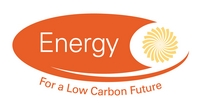Projects
Projects: Projects for Investigator |
||
| Reference Number | InnUK/102235/01 | |
| Title | Low Cost Solution Processed CIGS Solar Cells | |
| Status | Completed | |
| Energy Categories | Renewable Energy Sources(Solar Energy, Photovoltaics) 100%; | |
| Research Types | Applied Research and Development 100% | |
| Science and Technology Fields | PHYSICAL SCIENCES AND MATHEMATICS (Chemistry) 50%; PHYSICAL SCIENCES AND MATHEMATICS (Physics) 50%; |
|
| UKERC Cross Cutting Characterisation | Not Cross-cutting 100% | |
| Principal Investigator |
Project Contact No email address given Nanoco Technologies Ltd |
|
| Award Type | Collaborative Research & Development | |
| Funding Source | Innovate-UK | |
| Start Date | 01 April 2015 | |
| End Date | 31 March 2017 | |
| Duration | 24 months | |
| Total Grant Value | £399,562 | |
| Industrial Sectors | ||
| Region | North West | |
| Programme | Competition Call: 1405_CRD_ENE_GEN_ENCATMSR1 - Energy Catalyst Mid Stage Round 1. Activity Energy Catalyst Rnd 1 Mid Stage | |
| Investigators | Principal Investigator | Project Contact , Nanoco Technologies Ltd (100.000%) |
| Industrial Collaborator | Project Contact , Mechanical Engineering, Loughborough University (0.000%) |
|
| Web Site | ||
| Objectives | ||
| Abstract | The market for photovoltaic (PV) modules has grown at 35 % p.a. compound over the past 15 years and will exceed 40 GW in 2014. The drivers behind this extraordinary growth include the rising cost of fossil fuels, concerns over security of energy supplies and worries over climate change. Governments agencies world wide, including the DECC in the UK, are encouraging the deployment of PV through incentives. However as the cost of PV reduces many important regions are now at grid parity which removes the need for subsidies. This project will develop a new solution processed thin film photovoltaic device from a nanoparticle precursor, which offers a cheaper route to producing PV modules. The aim of the project will be to integrate technologies developed by the project partners, to improve the efficiency of small area solar cells, then to scale the technology to mini-module dimensions, while maintaining a focus on reducing the cost of the process. The application of the technology to flexible substrates will also be assessed. Lower cost processing of modules will develop a lucrative business for CIGS nanoparticle inks and even greater growth of solar energy deployment.The market for photovoltaic (PV) modules has grown at 35 % p.a. compound over the past 15 years and will exceed 40 GW in 2014. The drivers behind this extraordinary growth include the rising cost of fossil fuels, concerns over security of energy supplies and worries over climate change. Governments agencies world wide, including the DECC in the UK, are encouraging the deployment of PV through incentives. However as the cost of PV reduces many important regions are now at grid parity which removes the need for subsidies. This project will develop a new solution processed thin film photovoltaic device from a nanoparticle precursor, which offers a cheaper route to producing PV modules. The aim of the project will be to integrate technologies developed by the project partners, to improve the efficiency of small area solar cells, then to scale the technology to mini-module dimensions, while maintaining a focus on reducing the cost of the process. The application of the technology to flexible substrates will also be assessed. Lower cost processing of modules will develop a lucrative business for CIGS nanoparticle inks and even greater growth of solar energy deployment. | |
| Data | No related datasets |
|
| Projects | No related projects |
|
| Publications | No related publications |
|
| Added to Database | 06/10/15 | |



